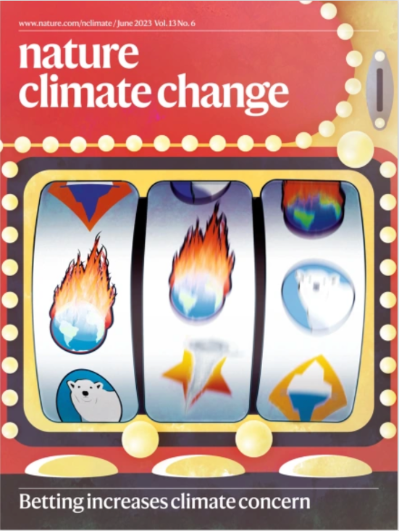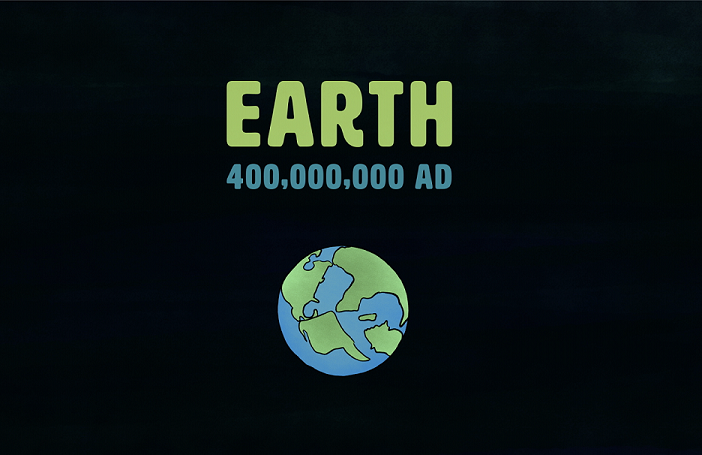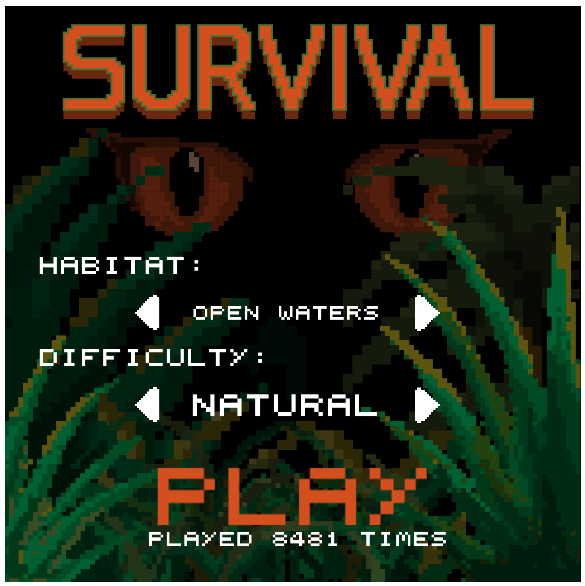Malcolm A. MacIverProfessor of Mechanical EngineeringProfessor of Neurobiology (Courtesy)Professor of Computer Science (Courtesy)Professor of Biomedical Engineering

About Malcolm MacIver
Malcolm MacIver dropped out of school at age 9, never expecting to return. He grew up off the grid in far northern Canada, where he was free to roam wherever his curiosity took him, coming close to freezing to death only once in the process. As a teenager he earned pocket money by planting 2,000 trees a day and working in log home construction. His parents wanted him to become an artist, so he disappointed them by getting more excited by philosophy and math. Using his extensive tree planting credentials, he managed to obtain entry into a community college, and then the University of Toronto where he pursued philosophy and computer science. After meandering through cognitive science, artificial intelligence, neuroscience, and robotics over the course of one masters, two doctorate programs, and a postdoctoral fellowship, he found his passion in trying to understand animal behavior from ethological, evolutionary, neuronal, robotic, and computational angles, continuing to roam where his curiosity takes him. The wishes of his parents have returned to haunt him in the form of a desire to make interactive art installations, which have exhibited in Holland, China, and the US.
Brief academic biography for talk introductions
Online media for a general audience
"A robot-rodent interaction arena with adjustable spatial complexity for ethologically relevant behavioral studies." Cell Reports article introducing an innovative concept for conducting animal behavior research. It describes a unique setup where rodents interact with a robotic agent within an environment whose spatial complexity can be adjusted. This setup is designed to closely mimic natural conditions, making the behavioral studies conducted in this arena highly relevant from an ethological perspective.

"Gambling, literally, on climate change." National Public Radio's Planet Money segment covering the results of our study on how participation in climate prediction markets can affect belief about climate change.
Using Prediction Markets to Raise Climate Concern/Participation in climate markets bolsters backing for anti-warming measures. Video press release from collaborators at Columbia University Business School here.
New theory predicts movement of different animals using sensing to search
Ars Technica coverage on why the ability to plan evolved
Podcast Interview on Sean Caroll's Mindscape, on Sensing, Consciousness, and the Imagination
Research highlight in Nature on work in Current Biology on hindbrain circuits mediating escape responses to looming stimuli
Coverage of research on why our fish ancestors headed for terra firma 350 million years ago: in The Atlantic by Ed Yong, in Quanta by Jennifer Ouellette.
How Brain Scientists Forgot That Brains Have Owners - Ed Yong at The Atlantic covers our paper "Neuroscience Needs Behavior" with Krakauer et al.
Video on discovery of a new form of convergent evolution (2 min) (New York Times Science Take). Written synopsis here; Publication here.
Talk for AAAS on Electric Fish Robotics (25 min). Shorter (3 min) overview of one of the robots. Review publication PDF.
Serious Game
For the Nature Communications 2020 study, we developed a browser-based interactive “serious game” to demonstrate how different habitats make different demands on the nervous system, from ones that make high demands on rapid innate reflexes to ones that require deliberation to succeed. MacIver lab member German Espinosa wrote the code and lab member Alexander Lai did the artwork.
Videos
April 12 2023 The Block Art Museum. This dialogue between the scientist Malcolm MacIver and artist Dario Robleto explores how art and science both contemplate—and seek to overcome—the physical and temporal limits of human life. The discussion touches on the question of how art might provide a model for long-term thinking, especially in times of societal and ecological transformation. Presented in conjunction with the exhibition The Heart’s Knowledge: Science and Empathy in the Art of Dario Robleto. Link to short article on event here; video below.
February 2 2023 Penn State Extraterrestrial Intelligence Center Seminar on the importance of terrestriality in the emergence of cognition on Earth as a possible guide to what kinds of exoplanets to focus on for intelligent life. 
September 27 2022 Keynote at the Conference on Cognitive Computational Neuroscience, discussing the drivers of learning across timescales: evolutionary, developmental, & computational perspectives.
September 28 2022 Generative Adversarial Collaboration at the Conference on Cognitive Computational Neuroscience, discussing the place of planning in biology and AI. Presenters: German Espinosa, Jessica Hamrick, Jane Wang, Mark Ho, Malcolm MacIver, David Redish, with Nathaniel Daw contributing.
Animation: Our short-sighted inner fish (3:46). Our discovery on how vision dramatically changed over 300 million years ago, and implications for the shape of consciousness and where it is going.
April 16 2021 Talk at the Allen Institute for Artificial Intelligence, discussing the ecological and sensory bases of plan-based action control, and new work on decision making over long time/space horizons applied to climate change.
Talk on information harvesting and the emergence of planning in animals (47:30). eLife 2020 study & Nature Communications 2020.
How the geometry of life on land may have selected for planning (1:43). Nature Communications, 2020 study.
"Can We Expand Our Consciousness with Neuroprosthetics?" 16 minute talk at the 2013 Caltech TEDx on The Brain, Pasadena, California USA
Scale is an interspecies art project: an audience-interactive work that involves nocturnal electric fish from the Amazon, from localStyle.
2001 Ph.D. Neuroscience, University of Illinois and the Beckman Institute of Advanced
Science and Technology, Urbana IL
1994 (through to 1996) Course work only of dual Ph.D. in Cognitive Science and
Philosophy, Indiana University, Bloomington IN
1992 M.A. Philosophy, University of Toronto
1991 B.Sc. Double major, Philosophy and Computer Science, University of Toronto
Neural engineering laboratory class: Neuromechatronics. Connecting machines to simple nervous systems. Class code: BME 464.
Course Description: A core competency for neural engineering is the construction of closed loop systems that combine a biological/neural component with control of a mechatronic system. This laboratory course will do this with several simple biological systems in interaction with simple mechanical systems. Students will engage in preparation of a biological specimen for recording, data acquisition, design of simple mechatronic systems that will interact with the specimen, and the coupling of the acquired data to the mechatronic system. Early in the course, signals will be acquired with either minimal or no dissection, while later in the course dissections will be performed to obtain neural signals from animals to drive a mechatronic device.
Some of the topics to be covered: Basic biological & neural signal acquisition and processing, relevant neurobiology, and mechatronics, including the use of xPC (a real time control system that interfaces with MATLAB), EMG electrodes and force transducers for doing closed-loop activation of muscle.
Neural engineering lecture course: Computational Neuromechanics & Neuroethology. Class code: BME 461.
Course Description: The mechanical interaction of the body with its environment is a key player in nervous system function. In this course, we will take a systems-level view of animals and explore relationships between behavior, biomechanics, and the nervous system through examples from the literature and through MATLAB projects with a classic vertebrate model system from neuroethology.
Topics Include: Basic principles of evolution and development, and how this has affected sensory and motor system interactions; Whole-animal behavior modeling techniques, capture and simulation of behavior; Sensory signals, basic physics and simulation; Optimality theory in understanding animal behavior; The energetic cost of information and how this affects behavior and morphology.
Other courses taught include BME 271, Introduction to Biomechanics, and ME 224, Experimental Engineering.
Art and Science
scale, 2010
Malcolm MacIver, Marlena Novak, and Jay Alan Yim
Sponsored and funded by the National Science Foundation, the Northwestern University's Center for Interdisciplinary Research in the Arts, and the McCormick School of Engineering and Applied Science, Office of the Dean. Exhibited at Eindhoven Holland, Nov 18-28 2010, at the STRP Festival. scale was subsequently presented at the TransLife Triennial at the National Art Museum of China in Beijing, 27 July-17 August 2011 (New York Times Review).
scale [documentation, STRP Festival 2010] from localStyle on Vimeo.
Exhibit Statement
scale is an interspecies collaborative audio installation that celebrates a type of fish from the Amazon River Basin. These fish continually discharge a weak electric field of constant frequency that is audible when amplified through a speaker. Similar to sonar used by bats and dolphins, the fish use this field to detect their surroundings and prey while hunting at night; they have contributed greatly to our understanding of the nervous system.
Their electromagnetic discharges fall within a range of 30-1200 Hz that approximate the lowest B-natural on a piano to the D-sharp six octaves higher, depending on the species. We assemble a "choir" of individuals, comprising a minimum of 12 fish (from 12 species). Fish are housed individually in comfortable tanks outfitted with electric field sensors. The tanks are configured into a sculptural installation, arranged in a shallow arc. Colored LED displays mounted under each tank respond in real time to the audio output from each fish, providing user-activated visual feedback. To facilitate and encourage audience interaction, we build upon commonly recognized musical metaphors as access points for participants to experience the sonification of the electrical signals made by these fish. A modified Nintendo Wii wireless controller serves as a conductor's baton. Participants can cue an individual fish to start it "singing" and a second cue to the same fish will signal it to stop. A programmable touchscreen is configured to provide control over their relative volumes.
Visitors hear the fish "sing" together, producing rich and unusual harmonies unlike any human choir. Participants leave the installation with the unique experience of having conducted a live performance with an ensemble of remarkable fish.
Body Electric, 2003
Malcolm MacIver and Simon Penny
Sponsored and funded by Caltech and the National Science Foundation. Exhibited at the Williamson Art Gallery in the Art Center College of Design in Pasadena CA, April 15-June 29 2003.
BodyElectric from NxR Lab on Vimeo.
Visit the web site on the exhibit
Images
Reviews
- Artweek
- Los Angeles Weekly
- Los Angeles Times preview
- Los Angeles Weekly Pick of the Week
Materials
Computers, projectors, speakers, infrared lights, cameras, custom software
Exhibit Statement
Until recently, the prevailing orthodoxy concerning perception was rooted in an enlightenment-objectivist model which proposed that sensory systems take in the world passively, with information funneling into our brain to form rich internal representations of the world for guiding our behavior. David Marr began his influential book on vision by saying "vision is the process of discovering from images what is present in the world, and where it is." Andrew Blake called this approach "a prescription for the seeing couch potato."
The passive view of perception is embedded in scientific culture and as a result, structures the hardware and software of our technologies, with its characteristic lack of sensory intelligence and dynamic engagement with the world. A more recent view of perception is that behavior is tightly coupled to the way we sense the world, that perception is a temporally extended process of active, embodied engagement with the world. Rather than develop rich internal models, animals, including people, maintain close sensorimotor contact with the world, allowing the world to be its own best model. Diverse embodied human cultural practices, including various art forms, are also incompatible with the objectivist view. In sensory neuroscience, the role of behavior in perception is especially clear for certain sensory champions, studied to address questions about how all animal sensing occurs. One of these is the weakly electric fish. These fish hunt at night, in muddy rivers where vision is useless. They utilize a weak self-generated field to sense their surroundings. Thousands of sensors covering the body surface become stimulated by nearby objects, and their nervous system decodes this to analyze the type and position of the object. Body Electric combines active sensing in interactive cultural experience with the study of such systems in neuroscience. In Body Electric, we simulate the electrosensory system of these fish through a custom multimodal real-time sensing and display system. The 'spectactor' engages in a complex sensorimotoric exploration of a novel environment.

